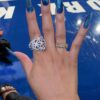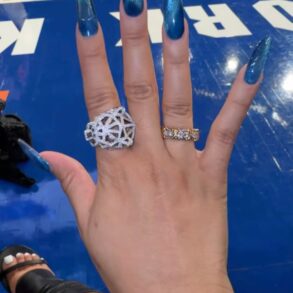
Depending on your organization’s size and constituency, you may want to send more than the number of emails I suggest for the critical year-end fundraising month of December.
If you’re smart, you’ll never send less. Because this is the time of year people are feeling most big-hearted and generous. If you’re a savvy philanthropy facilitator, you won’t want to waste this most wonderful time of the year!
You’ll raise more money this time of year than any other time. People often set aside a certain amount of money to give to friends, coworkers and nonprofits. If you want them to give to your nonprofit as well, it’s wise to be proactive.
So, how about adding some extra energy to your email strategy to grab donors’ attention? People miss a lot of emails. Unlike direct mail, they aren’t on the kitchen table for a week or more. They’re either opened right away or that’s the end of it. When folks are busy and stressed — not to mention inundated with other nonprofit appeals — you may catch them on a day they just can’t be bothered.
So, not sending enough year-end emails is a risky proposition.
Minimize Your Risk of Going Unnoticed
Don’t hamstring yourself by placing your bet on your solitary email finding your would-be donor in a good mood. The odds are against it, with a nonprofit email open rate of 29%.
Give people more chances than that. Here is my advice:
- Send at least a weekly fundraising email during the four-and-a-half weeks preceding the final week of the year.
- Send no fewer than three emails during the last week of the year.
- Sending emails on the last three days of the year (or as close to this as possible to assure only one of these falls on a weekend), according to Steven Screen.
Plan an email strategy — with a nice mix of alternating monetary appeals and cultivation messages — that will make folks sit up and pay attention. The best way to set the table so the donor decides to enjoy your feast — aka what’s inside the email — is to use a resonant subject line. Be sure all of your emails tap into donors’ needs and motivations, so avoid using phrases like these:
- “3 days left to give.” This won’t evoke the spirit of generosity or help as much as “This year, give the gift of music.”
- “Last day to grab your tax deduction.” This won’t evoke the unselfish feeling of doing unto others as much as “Last chance to give the gift of a meal.”
Spend More Time on the Subject Line
Remember, donors don’t care about your timelines. Most don’t even care about tax benefits, especially since fewer and fewer itemize deductions. As you write your subject line, consider what’s in it for the donor.
- Does the issue match their values? “Help children living in foster care know somebody cares.”
- Is there heart-stopping urgency? “Unless you give today, Sonya won’t have a place to live next month.”
- Is there an intriguing question? “Want to know the power of $10?”
- Does the beginning of the story intrigue them to want to learn more? “There was a reason the children drank the dirty water.”
- Is there something that evokes curiosity? “This year record numbers of stray dogs need your help.”
Carefully Consider the Sender
Arguably the “from” line is more important than the subject line because it’s often what motivates people to open the email. Send your email from a person or brand your targeted reader knows, trusts and, ideally, likes. Often, this will be the executive director though it could be another beloved staff member or lay leader. Even when you have a trusted brand, you’ll likely get a better response from the person at the brand.
Think about who the email is coming from before you write it. Plan ahead so when your reader opens their inbox, they’re excited. Too often that’s left to the last minute, when a staffer is assigned to deploy the email. Here are the two likely outcomes the IT or administrative assistant typically takes:
- Deploy the email from a corporate account. This is a thoughtless approach.
- Innocently ask, “Who’s it coming from?” This is an afterthought. I’ve seen more than one occasion where this delayed the appeal because it took a while to decide on the signatory or a new “from” email account needed to be created.
The Good Stuff Inside
Now that you’ve got folks’ attention, make sure you keep it. Make yourself an email appeal template that includes these elements:
- Specific ask. Nothing vague or buried.
- Brief description of outcomes the gift will make possible. What happens because of the donor’s gift. Not a recitation of your programs, services or processes.
- Reasons to give now. Convey urgency. This can be as simple as adding the word “because” (e.g., “because children need shelter”) or a mention of a specific date (e.g., “before the matching grant expires Dec. 31”).
- Connection to a shared value. Segmenting your emails to connect to something you know the donor cares about based on their past giving and/or affiliation with you gives your appeal a leg up. For example, cats versus dogs, scholarships versus teacher salaries; or research versus preventive care.
- Another ask or two. Give people multiple opportunities to give in the body and postscript — the P.S. is often one of the first things people read.
- Signature. Your email should feel personal. Remember, people give to people.
Screen also suggested shortening the final two emails you send by simply removing the value piece from the second email and the outcomes piece from the third email.
Nudging Is Good
Many people — staff and volunteers alike — suffer from a misplaced fear of fundraising that results in them not wanting to ask too much. It comes from thinking this is all about money when it’s really about love. And many of your would-be donors would love to have an impact. They want to feel purposeful.
If you’ve ever felt donors weren’t interested because they didn’t respond, put aside that assumption. People have all sorts of reasons for not responding the first time. They appreciate reminders, especially to do something they want to do, and that makes them feel good.
Part of your job as a philanthropy facilitator is to make giving easy. And that means a nudge or two. Don’t fall into the learned trap of thinking you shouldn’t bother people.
Stick the Landing
To be truly effective with your nudges, consider the web landing pages to which readers of your email are transported. With offline, direct-mail fundraising, most fundraisers understand the total appeal package must include a response device that stands on its own merits The same holds true with online fundraising, where your donation landing page is your response device.
Don’t abdicate responsibility for the landing page if you want your year-end emails to raise the most money possible. The Donanto Foundation discovered three specific nudges you can add to your website to boost your chances for success:
- Add an anchor to your online donation form. Prefill the donation field with an amount higher than your average donation
- Emphasize recurring donations. Default to monthly donation over one-time donation.
- Give effective guidance. Suggest three to give monthly donation amounts, starting with a figure close to the most frequent recurring donation amount and concluding with a figure at least double the first amount.
With a little advance planning, you’ll make the most of the opportunities present during this wonderful time of year.
The preceding blog was provided by an individual unaffiliated with NonProfit PRO. The views expressed within do not directly reflect the thoughts or opinions of NonProfit PRO.
This post was originally published on this site be sure to check out more of their content.







